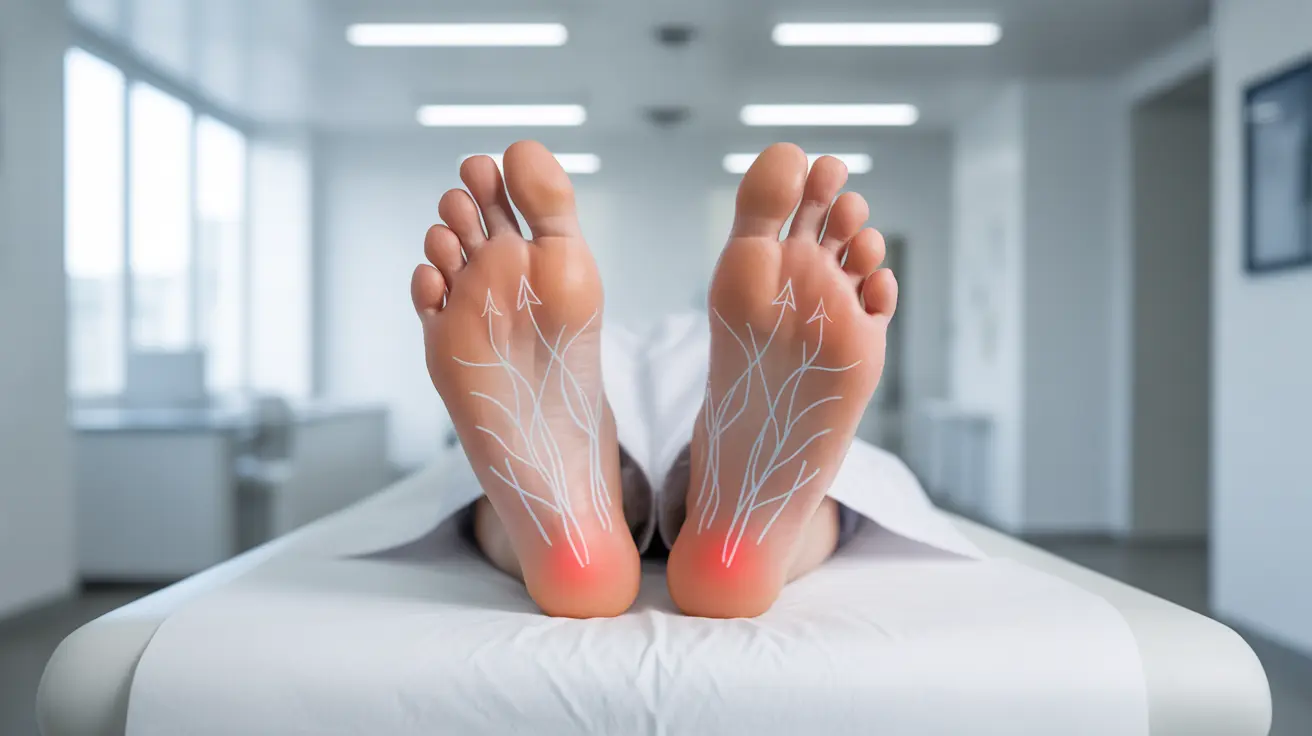Diabetic neuropathy is a serious complication of diabetes that affects the peripheral nerves, causing various uncomfortable and potentially dangerous symptoms. Understanding these symptoms is crucial for early detection and proper management of this condition. This guide will help you identify the main symptoms of diabetic neuropathy and understand when to seek medical attention.
Key Symptoms of Diabetic Neuropathy
Diabetic peripheral neuropathy typically develops gradually and can affect different parts of the body, particularly the feet and legs. Here are the five main symptoms to watch for:
1. Numbness and Tingling
The most common early sign of diabetic neuropathy is numbness or tingling sensations, often described as "pins and needles." These sensations typically begin in the toes and feet, gradually progressing upward through the legs. Some people may also experience similar symptoms in their fingers and hands.
2. Pain and Burning Sensations
Many people with diabetic neuropathy experience varying degrees of pain. This can range from mild discomfort to severe burning sensations. The pain may be worse at night and can interfere with sleep. Some individuals describe it as sharp, shooting pain or constant aching.
3. Loss of Balance and Coordination
As neuropathy progresses, it can affect your ability to maintain balance and coordination. This occurs because the nerve damage interferes with your body's position sense, making it harder to know where your feet are without looking at them. This can increase the risk of falls, especially in low-light conditions.
4. Muscle Weakness
Nerve damage can lead to muscle weakness, particularly in the feet and legs. This weakness may make it difficult to walk or perform everyday activities. Some people may notice they have trouble lifting their feet or toes, a condition known as foot drop.
5. Changes in Skin and Nails
Diabetic neuropathy can affect the nerves that control sweating and other autonomic functions. This can lead to dry, cracked skin on the feet, slower healing of cuts and sores, and changes in nail texture or growth. These changes can increase the risk of infections and other complications.
Prevention and Management
The most effective way to prevent or slow the progression of diabetic neuropathy is maintaining good blood sugar control. This includes:
- Regular blood sugar monitoring
- Following a diabetes-friendly diet
- Getting regular exercise
- Taking prescribed medications as directed
- Regular check-ups with healthcare providers
Frequently Asked Questions
What are the five main symptoms of diabetic peripheral neuropathy?
The five main symptoms are numbness and tingling, pain and burning sensations, loss of balance and coordination, muscle weakness, and changes in skin and nails. These symptoms typically start in the feet and can progress upward through the legs.
How can I tell if numbness or pain in my feet is caused by diabetic neuropathy?
If you have diabetes and experience persistent numbness, tingling, or pain in your feet, particularly if it's symmetrical (affects both feet similarly), it's likely related to diabetic neuropathy. However, a proper diagnosis from a healthcare provider is essential.
What treatments are available to manage pain and symptoms of diabetic neuropathy?
Treatment options include medications for nerve pain (such as anticonvulsants or antidepressants), topical treatments, physical therapy, and lifestyle modifications. Your healthcare provider can create a personalized treatment plan based on your symptoms.
How does controlling blood sugar help prevent or slow the progression of diabetic neuropathy?
Maintaining stable blood sugar levels helps prevent further nerve damage by reducing inflammation and oxidative stress on nerve cells. Good blood sugar control can slow or stop the progression of neuropathy and may even improve some symptoms.
What complications can arise from untreated diabetic peripheral neuropathy in the feet?
Untreated diabetic neuropathy can lead to serious complications including foot ulcers, infections, deformities, and in severe cases, amputation. The loss of sensation can make it difficult to notice cuts or injuries, which can become infected if left untreated.




